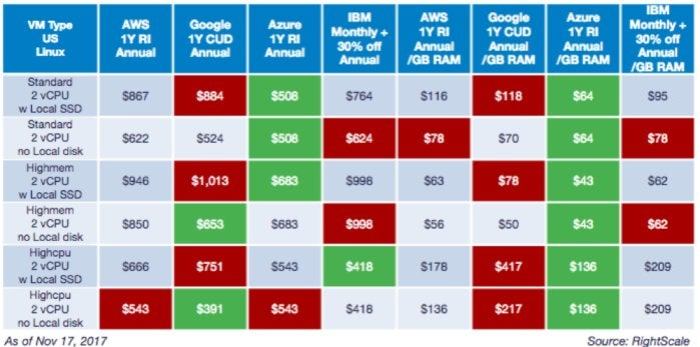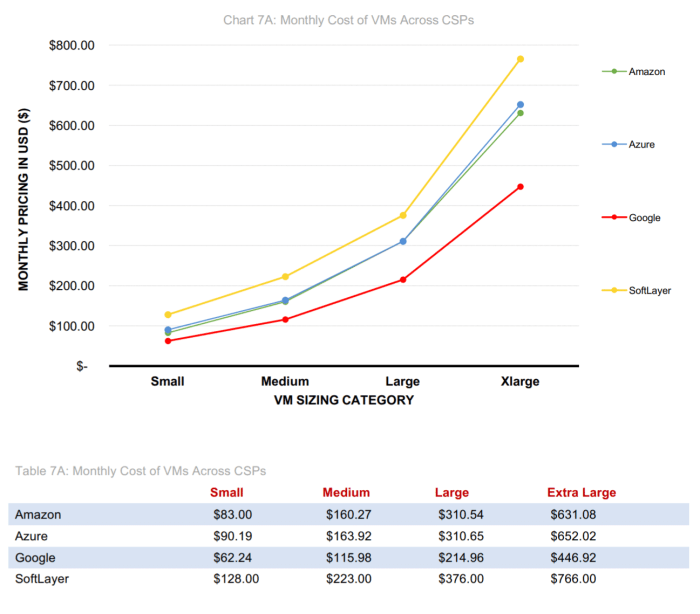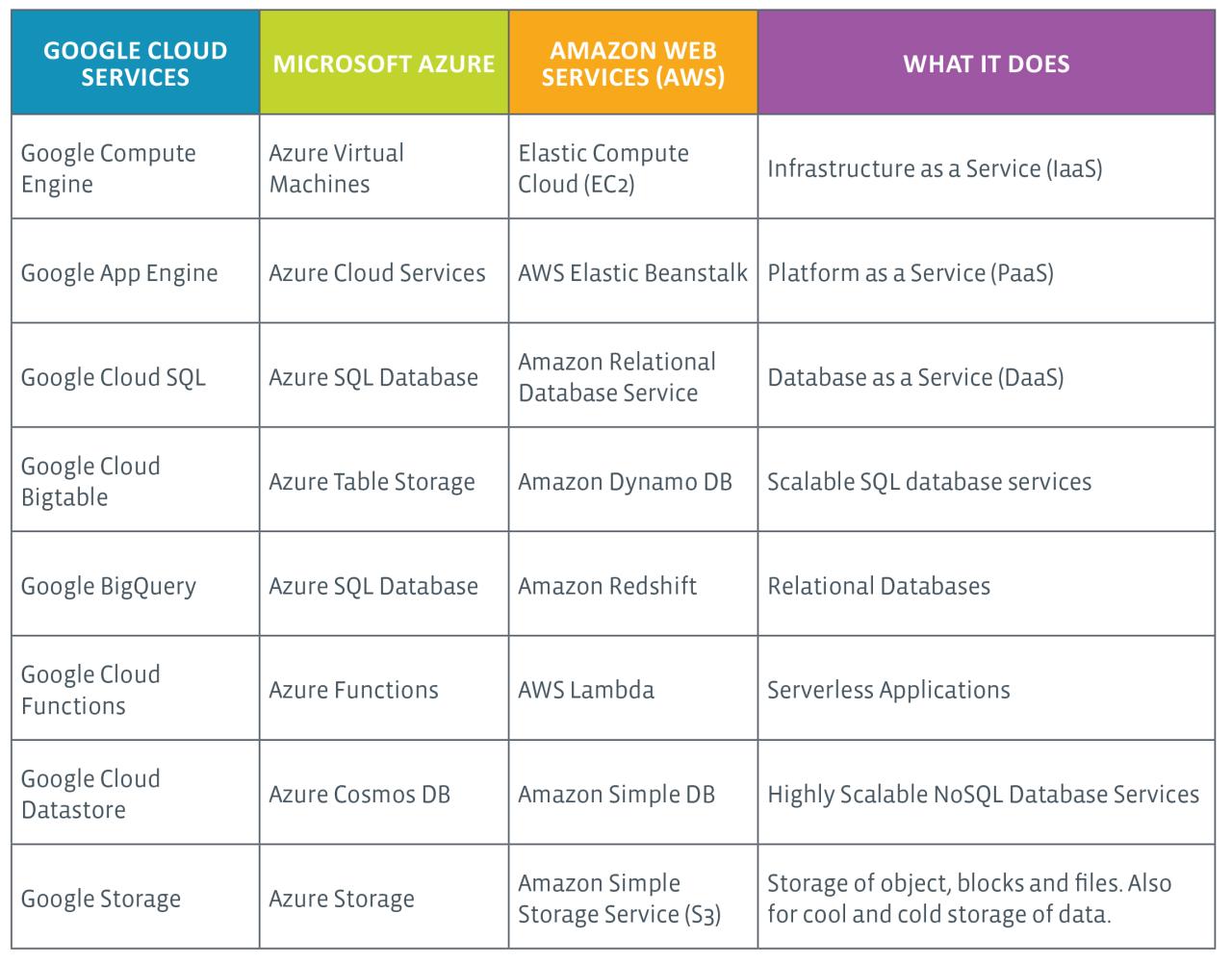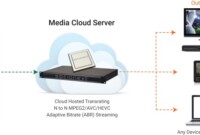Cloud hosting pricing and cost comparison for different providers is a critical consideration for businesses seeking to leverage the scalability and flexibility of cloud computing. Navigating the complex landscape of cloud providers, each with its unique pricing models and service offerings, can be daunting.
This comprehensive guide delves into the intricacies of cloud hosting pricing, exploring key factors influencing costs, common pricing models, and a detailed comparison of leading providers.
Understanding the factors that drive cloud hosting costs is essential for making informed decisions. This guide examines the impact of server resources, bandwidth, location, and data sovereignty on pricing, equipping readers with the knowledge to analyze and compare different cloud hosting options effectively.
We also explore various pricing models, including pay-as-you-go, fixed monthly subscriptions, and tiered pricing, highlighting their advantages and disadvantages for different use cases.
Choosing the Right Cloud Hosting Provider: Cloud Hosting Pricing And Cost Comparison For Different Providers

Choosing the right cloud hosting provider is crucial for the success of your website or application. With so many options available, it can be overwhelming to decide which one is best for your needs. This section provides a comprehensive guide to help you navigate the process and make an informed decision.
Factors to Consider When Selecting a Cloud Hosting Provider
To ensure you choose the right cloud hosting provider, consider these key factors:
- Performance:Performance is a critical factor in cloud hosting. Consider factors such as uptime, speed, and resource allocation. Look for providers with a proven track record of delivering high performance and reliability.
- Scalability:Your cloud hosting provider should be able to scale with your business needs. As your website or application grows, you should be able to easily add more resources without experiencing downtime or performance issues.
- Security:Security is paramount in the cloud. Look for providers with robust security features such as firewalls, intrusion detection systems, and data encryption.
- Support:Choose a provider with excellent customer support. You should be able to reach them easily and quickly, and they should be able to provide timely and effective assistance.
- Pricing:Consider the pricing models offered by different providers. Compare costs based on your specific needs and budget. Look for transparent pricing structures and flexible payment options.
Evaluating Pricing Models and Comparing Costs
Cloud hosting providers offer various pricing models, each with its advantages and disadvantages. Here’s a guide to evaluating these models and comparing costs:
- Pay-as-you-go:This model charges you only for the resources you use. It’s ideal for businesses with fluctuating workloads or those just starting out.
- Reserved Instances:This model offers discounts for committing to a certain amount of resources for a specific period. It’s suitable for businesses with predictable workloads.
- Spot Instances:This model provides access to unused resources at a discounted rate. It’s ideal for workloads that can tolerate occasional interruptions.
To compare costs, consider the following factors:
- Monthly fees:Compare the monthly fees charged by different providers based on your required resources.
- Data transfer costs:Consider the data transfer fees charged for incoming and outgoing traffic.
- Storage costs:Compare the storage costs based on your storage requirements.
- Additional features:Consider the costs associated with additional features such as load balancers, databases, and security services.
Tips for Negotiating Pricing and Securing Discounts, Cloud hosting pricing and cost comparison for different providers
Negotiating pricing and securing discounts can help you save money on cloud hosting. Here are some tips:
- Research:Compare pricing from different providers to understand the market rates.
- Volume discounts:Inquire about volume discounts if you plan to use a significant amount of resources.
- Long-term commitments:Consider committing to a longer-term contract to secure lower rates.
- Bundle deals:Explore bundle deals that offer discounts on multiple services.
- Negotiate:Don’t be afraid to negotiate with providers to get the best possible price.
Cloud Hosting Cost Optimization Strategies

Cloud hosting, while offering remarkable flexibility and scalability, can sometimes lead to unexpected expenses if not managed effectively. By implementing strategic cost optimization techniques, you can significantly reduce your cloud hosting bills without compromising performance or reliability.
Identifying Areas for Cost Reduction
Understanding where your cloud hosting costs are stemming from is crucial for effective optimization.
- Unused Resources:Instances running with excessive capacity or services that are not actively used contribute significantly to unnecessary expenses. Regularly monitor resource utilization and adjust instance sizes or shut down idle services to avoid overspending.
- Overprovisioning:Overestimating future needs and provisioning resources beyond actual requirements can lead to significant cost overruns. It’s essential to analyze historical data and project future demands accurately to avoid overprovisioning.
- Unoptimized Storage:Storing large volumes of data in expensive storage tiers without proper categorization can escalate costs. Implement data lifecycle management strategies to move inactive or less frequently accessed data to lower-cost storage tiers.
- Inefficient Data Transfer:Excessive data transfer between different regions or data centers can inflate your bill. Optimize data transfer by minimizing unnecessary data movement and leveraging regional services or content delivery networks (CDNs) for geographically dispersed users.
Strategies for Optimizing Server Resource Usage
Optimizing server resource usage is a key aspect of reducing cloud hosting costs.
- Rightsizing Instances:Choose instance sizes that align with your application’s actual resource requirements. Avoid overprovisioning, which can lead to wasted resources and unnecessary costs. Regularly monitor performance and adjust instance sizes as needed.
- Resource Sharing:Consider sharing resources among multiple applications or services, especially during periods of low demand. This can help reduce the overall number of instances required, leading to cost savings.
- Auto Scaling:Implement auto-scaling mechanisms that automatically adjust instance sizes based on real-time demand. This ensures that you have enough resources to handle peak loads while minimizing costs during periods of low usage.
- Code Optimization:Optimize your application code to minimize resource consumption. Identify bottlenecks and inefficient code segments, and refactor them for better performance and reduced resource utilization.
Minimizing Data Transfer Costs
Data transfer costs can significantly impact your cloud hosting expenses.
- Regional Services:Utilize cloud services that are located in the same region as your users to minimize data transfer distances. This can significantly reduce egress costs, especially for applications with high traffic volumes.
- Content Delivery Networks (CDNs):Deploy CDNs to cache static content closer to users, reducing the need for data transfer from your origin server. CDNs can significantly improve performance and reduce data transfer costs for websites with geographically dispersed users.
- Data Compression:Compress data before transferring it to reduce bandwidth usage and minimize data transfer costs. Cloud providers often offer built-in compression mechanisms, or you can implement your own compression algorithms.
- Data Archiving:Archive inactive or less frequently accessed data to lower-cost storage tiers to minimize data transfer costs. This can significantly reduce your overall storage expenses.
Leveraging Free Tiers and Discounts
Cloud providers often offer free tiers and discounts to attract new customers or encourage the use of specific services.
- Free Tier Trials:Take advantage of free tier trials to evaluate different cloud services and determine the best fit for your needs. This allows you to experiment with various features and services without incurring any costs.
- Reserved Instances:Consider committing to reserved instances for a specific period to receive discounted pricing. This can be advantageous if you have predictable resource requirements and need to optimize costs for the long term.
- Spot Instances:Utilize spot instances for non-critical workloads that can tolerate interruptions. Spot instances offer significant discounts compared to on-demand instances but are subject to availability and can be terminated with short notice.
- Discounts for Education and Non-Profits:Many cloud providers offer special discounts for educational institutions and non-profit organizations. Check with your provider for specific eligibility criteria and available discounts.
Final Thoughts

By understanding the nuances of cloud hosting pricing and leveraging the strategies Artikeld in this guide, businesses can optimize their cloud investments and achieve significant cost savings. Armed with the knowledge of pricing models, key factors influencing costs, and cost optimization strategies, businesses can confidently select the right cloud hosting provider and make informed decisions that align with their specific needs and budget.

